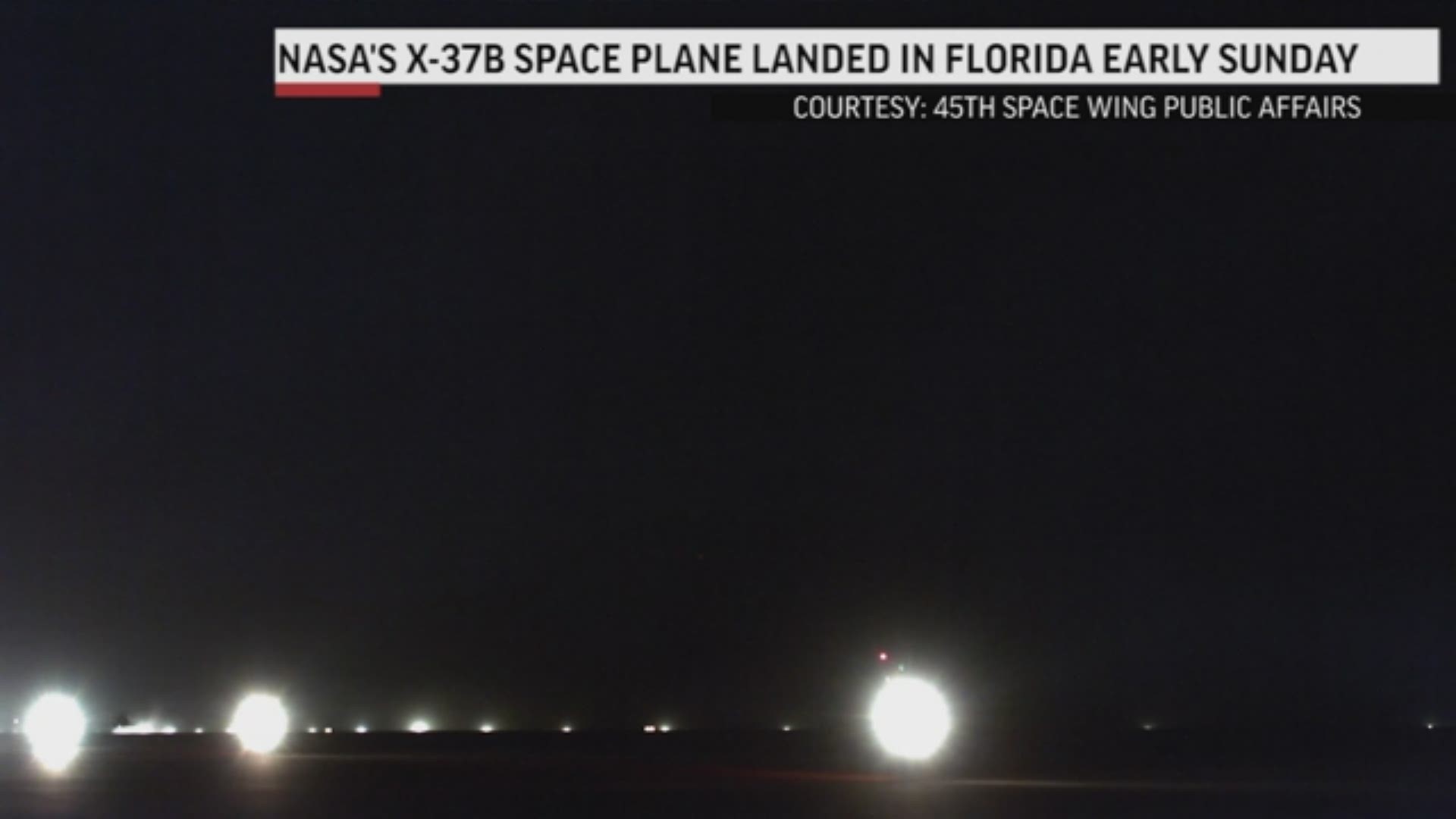Editor's note: The video above is from August when the vehicle broke its own record for most days in space.
An unmanned U.S. Air Force space plane returned to Earth Sunday morning after more than two years orbiting the planet.
The X-37B Orbital Test Vehicle landed at Kennedy Space Center in Florida at 3:51 a.m. after spending 780 days in orbit, according to the Air Force. This was the fifth mission for the X-37B and the duration for this mission was a record for the space plane.
The plane looks like a miniature version of the retired space shuttles, but with some design differences and no cockpit.
What exactly it was doing since launching aboard a Space X Falcon 9 booster on Sept. 7, 2017, remains unclear. An Air Force press release boasted about the successes of the mission but was thin on specifics.
"This is the Air Force’s premier reusable and unmanned spacecraft, providing the performance and flexibility to improve technologies in a way that allows scientists and engineers to recover experiments tested in a long-duration space environment," the Air Force said in a statement.
The Air Force did not elaborate on what those experiments might be.
With details lacking, there have been plenty of theories over time as to the X-37B's mission, including:
- Testing an experimental propulsion system that uses little-to-no fuel
- Orbital surveillance
- Weapons research
A sixth mission is expected to launch in 2020.
X-37B Orbital Test Vehicle facts (Source: U.S. Air Force)
- Contractor: Boeing
- Height: 9 feet, 6 inches
- Length: 29 feet, 3 inches
- Wingspan: 14 feet, 11 inches
- Launch Weight: 11,000 pounds
- Power: Gallium Arsenide Solar Cells with lithium-Ion batteries
- Launch Vehicles: Atlas V and SpaceX Falcon 9

